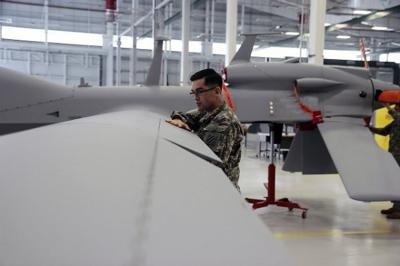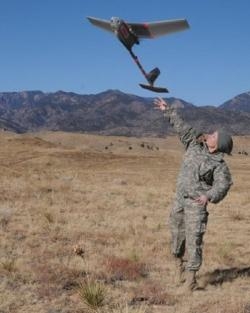Mon, Dec 30, 2013
Aircraft Lead The Way, But Other Unmanned Systems Gaining Ground
Strategy and budget realities are two aspects of the Defense Department's new Unmanned Systems Integrated Roadmap, released Dec. 23. The report to Congress is an attempt to chart how unmanned systems fit into the defense of the nation.

"The 2013 Unmanned Systems Integrated Roadmap articulates a vision and strategy for the continued development, production, test, training, operation and sustainment of unmanned systems technology across DOD," said Dyke Weatherington, the director of the unmanned warfare and intelligence, surveillance and reconnaissance office at the Pentagon.
"This road map establishes a technological vision for the next 25 years and outlines the actions and technologies for DOD and industry to pursue intelligently, and affordably align with this vision," he continued.
Unmanned aerial vehicles have received the most press, but unmanned underwater vehicles and ground vehicles are also providing warfighters with incredible capabilities. Although unmanned vehicles have proved their worth in combat operations throughout the Middle East and Central Asia, current technologies must be expanded and integrated into the sinews of the defense establishment, the report says.
It also calls for unmanned systems to be programs of record in order to achieve "the levels of effectiveness, efficiency, affordability, commonality, interoperability, integration and other key parameters needed to meet future operational requirements."

Of course, all DOD programs have to face the reality of the budget crunch. "Achieving affordable and cost-effective technical solutions is imperative in this fiscally constrained environment," the report notes.
Strategy really drives the technology. Unmanned systems will be crucial as the U.S. military shifts its focus to the Asia-Pacific region and puts the air-sea doctrine into effect. In the future, unmanned vehicles will be required to operate in more complex environments involving difficult weather, terrain, distance and airspace. All this will require extensive coordination with allies and host nations, the report says.
"The road map describes the challenges of logistics and sustainment, training and international cooperation while providing insight on the strategic planning and policy, capability needs, technology development and operational environments relevant to the spectrum of unmanned systems," Weatherington said.
(DoD images)
More News
Also: Centauri Aircraft Valkyrie, Meet the Admin, Night Airshow, Pelton Intv'w When we laid eyes on this critter, we fell in love… and then we learned the amazing story of t>[...]
Check out Blackshape in Oshkosh Display #190 Situated in the Apulian Aerospace district in Monopoli, Italy, Blackshape embodies the epitome of Italian craftsmanship, style, and qua>[...]
A Powerhouse In Aviation Safety Technology, Visit Alpha Systems AOA at Osh Display#3124-3125 Alpha systems AOA has been developing and integrating Angle of Attack systems for the l>[...]
High-Flying Models By PilotMall.com: Honoring Aviation's Legacy We are dedicated to preserving and celebrating our rich aviation heritage through stunning mahogany wood scale repli>[...]
CiES Has Pioneered Life Saving Technology Of Use To Pilots All Over The World... Booth 3119 CiES: CiES Inc. is the global leader in digital fuel quantity sensors for general aviati>[...]
 OSH25 Day Four Redux: Spirit SE-1!, H55 eFlyer, King Schools
OSH25 Day Four Redux: Spirit SE-1!, H55 eFlyer, King Schools ANN Thanks Our Speedy Sponsor... Blackshape!!!
ANN Thanks Our Speedy Sponsor... Blackshape!!! Alpha Systems AOA Guides ANN Oshkosh Coverage
Alpha Systems AOA Guides ANN Oshkosh Coverage Pilot Mall Intro's High Flying Models To ANN Sponsor Lineup
Pilot Mall Intro's High Flying Models To ANN Sponsor Lineup CiES Fuels ANN's Oshkosh 2025 Special Event Coverage
CiES Fuels ANN's Oshkosh 2025 Special Event Coverage




